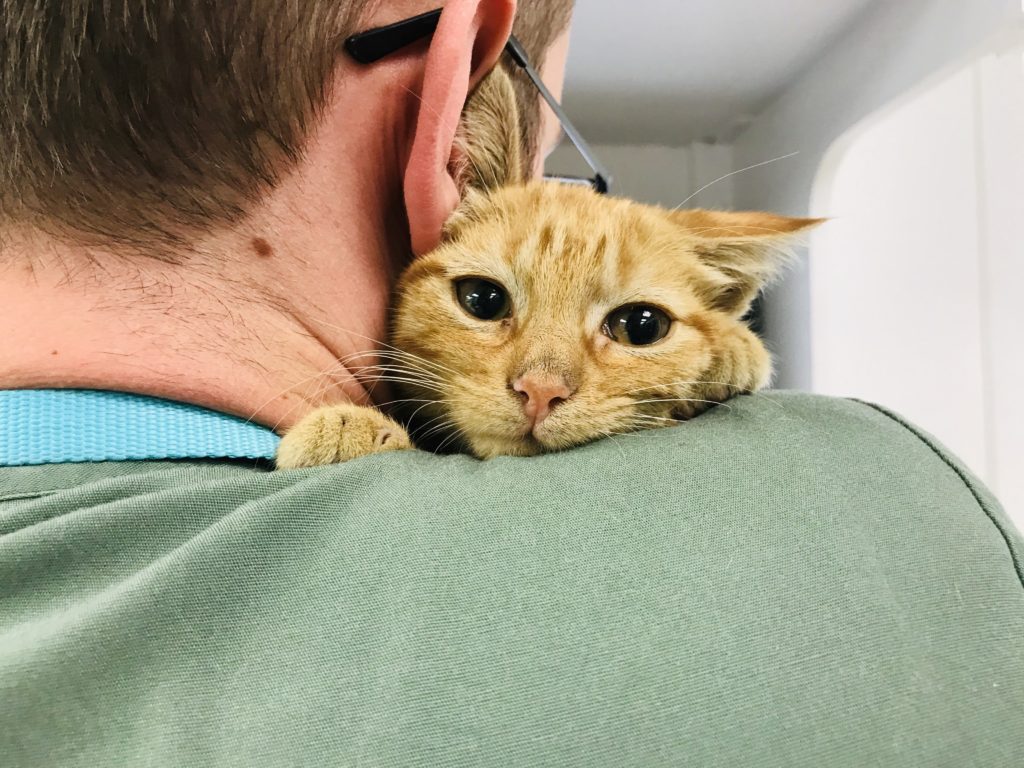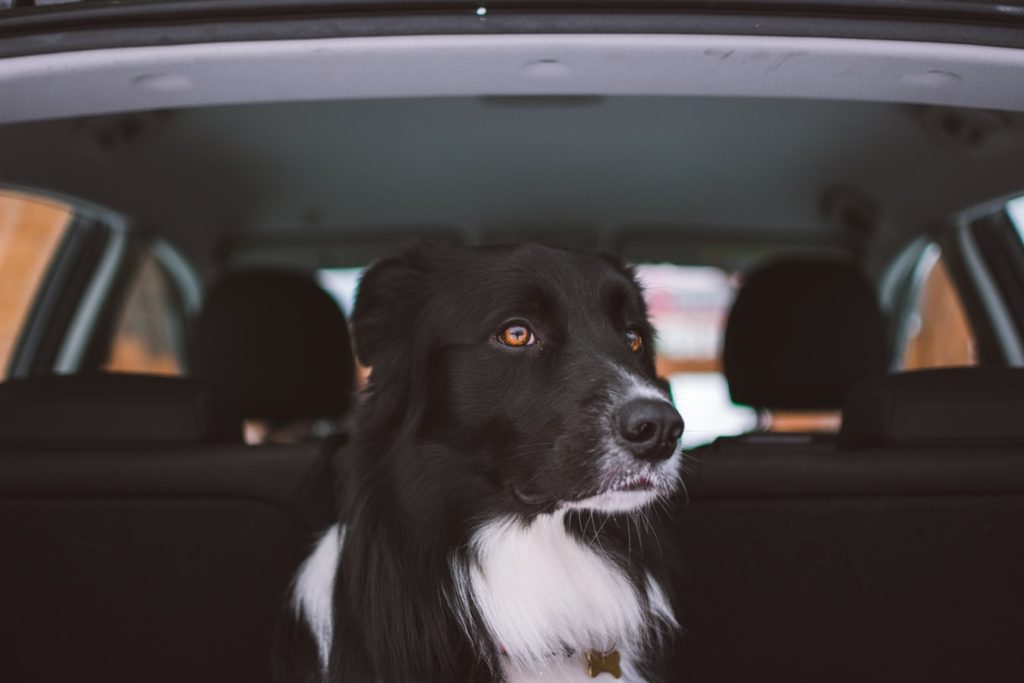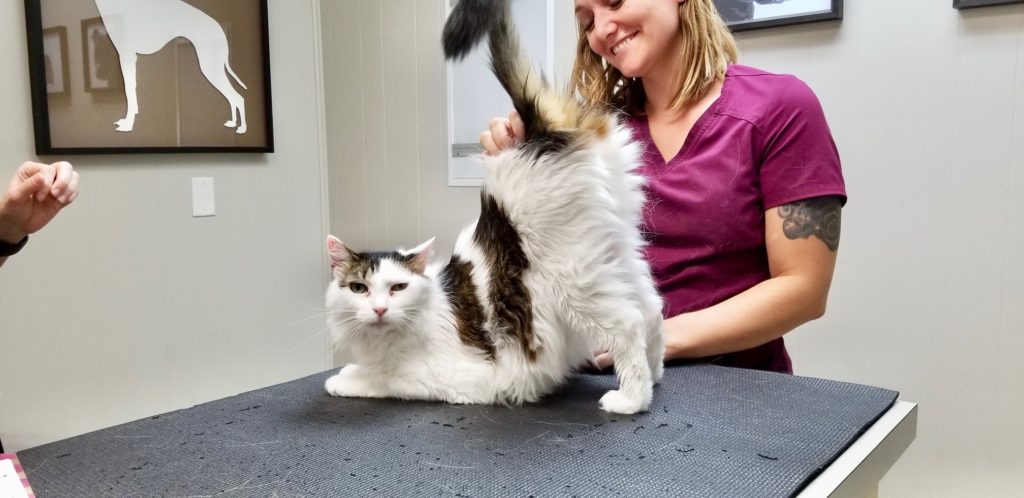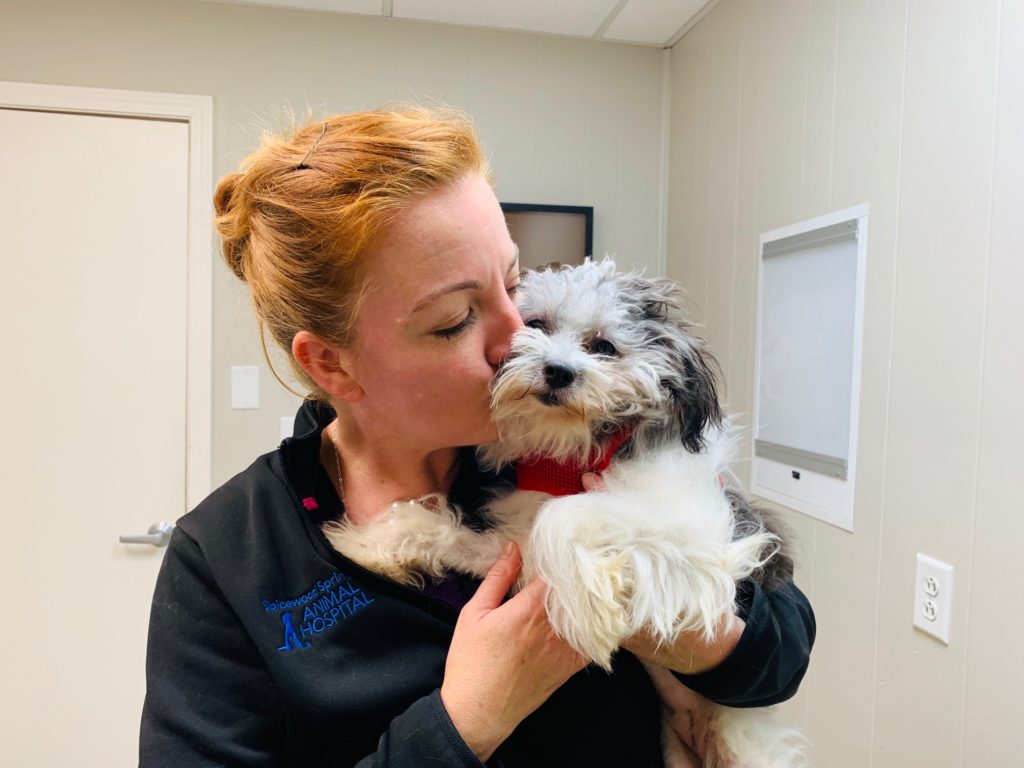At Spicewood Springs Animal Hospital we believe Halloween should be scary, not veterinary visits! Emotional well-being is important to overall health, and your pet’s health is our priority.

Some patients experience pre-vet anxiety, so pay attention to your pet’s behavior during the commute to the animal hospital. The first step in a scare-free veterinary visit is arriving safely to the animal hospital.
- Collars, Harnesses and Leashes – Fit your pets collar snug, allowing just two fingers to slide underneath. We recommend harnesses for small dogs and dogs with respiratory issues and front clasping harnesses for stronger dogs that pull on their leash. Your pet should be on a leash at all times. If you forget your pet’s leash or proper gear, securely carry them or call for a staff member to bring a slip-lead to your car.
- Crates – Cats and small pets should arrive in a travel-safe crate. Choose a crate that is secure and easy to open from both the front and the top. Keep the crate cozy by placing a towel or blanket on the bottom. Most pets find comfort in their owners’ scent, so you can also place a worn article of clothing in the crate. Feed meals in the crate and keep treats or toys in the crate. When not in use, place the crate in a quiet, common area where it is easily accessible.
- Travel – Take joyrides with your animal to acclimate them to car travel. These can be short drives around the block, quick trips through a drive-thru or a ride to a neighborhood park. If your pet experiences travel anxiety or car-sickness, ask your veterinarian about appropriate medications.

The waiting area can be stressful for some pets, so be mindful of your pet’s behavior once you have arrived at the animal hospital. The second step in a scare-free veterinary visit is minimizing stress before the examination.
- Check In – To minimize interaction with other animals and people, you may call to check in from the parking lot. You can wait in the comfort of your vehicle until an exam room is ready for your pet.
- Waiting Room – Cover your cats’ carrier with a towel or a blanket to help them feel safe while in the waiting room. You may give your pets treats or praise them for good behavior as they wait for their appointment. If your pet gets stressed out in the waiting area, you may always take them outside for an opportunity to relax.
- Private Room – If your pet may be contagious, aggressive towards other animals or people and/or extremely fearful, then you may use our private room. This room has it’s own entrance/exit. Please make arrangements with the receptionists to utilize the private room.
- Checking Out – To avoid additional stress after an appointment, you can opt for a hands-free check out. Ask if you may leave your pet in the exam room for a moment while you get checked out, or you can return your pet to your vehicle first. You may also leave payment info on file to expedite this process.

Many pets will experience some fear during their veterinary visit, but your veterinary team should provide services that minimize fear. The third step in a scare-free veterinary visit is attentive veterinary care.
- Pheromones and Essential Oils – Utilizing canine and feline pheromones to provide a calming environment for all our patients. We diffuse lavender essential oils in our lobby and our hallways, as well.
- Non-slip Surfaces – Placing yoga mats on the exam tables and floors. The non-slip surface helps patients comfortably sit or stand for their examinations.
- Gentle Handling – Handling each pet uniquely. We use appropriate handling in consideration of each patients’ comfort and safety, as well as the safety of the client and veterinary team.
- Positive Reinforcement – Using a variety of yummy treats to help positively reinforce the veterinary experience. Treats are helpful when introducing your pet to new people and stimuli. For patients who are picky eaters, or too scared to take treats, we may use praise and petting as positive reinforcement.
- **Helpful Hint: Bring your pet to their exam hungry and bring their favorite treats with you!
- Muzzling – Utilizing muzzles for safe handling of patients who are extremely fearful, painful and/or aggressive. Muzzling allows for safe and gentle handling when otherwise not practical.

Some pets will continue to exhibit anxiety while at the vet. For patients with extreme anxiety, your veterinarian will recommend anxiety medications or sedation for necessary treatments. A scare-free veterinary visit may not be possible for all patients without the help of calming medications.
- Anxiolytic Medications – If your pet suffers from anxiety at the vet, despite the above-mentioned protocols, then your veterinarian can prescribe oral anxiety medications to be taken before veterinary visits. Your veterinarian will make medication recommendations based on your pet’s health and medical history. These medications are safe and help alleviate fear, stress and anxiety to provide a scare-free veterinary experience.
- Sedation – If your pet suffers from severe stress at the vet, despite the above-mentioned protocols and the use of oral medications, then sedation may be required. Your veterinarian will administer sedation, determined by your pets’ health and medical history, to allow for safe handling of veterinary care.

Please consult with your veterinarian if you have concerns about your pet’s fear, stress or anxiety.



